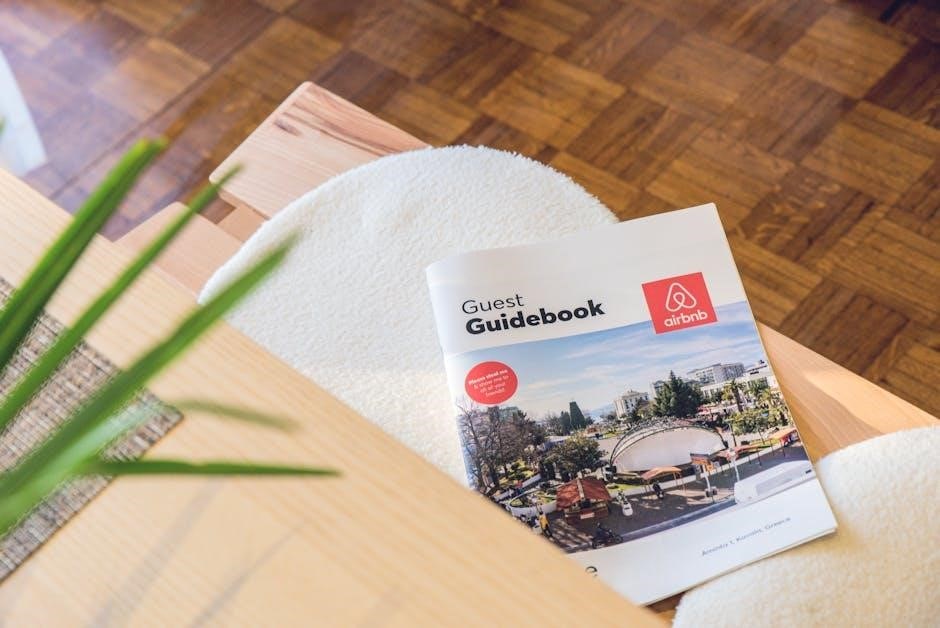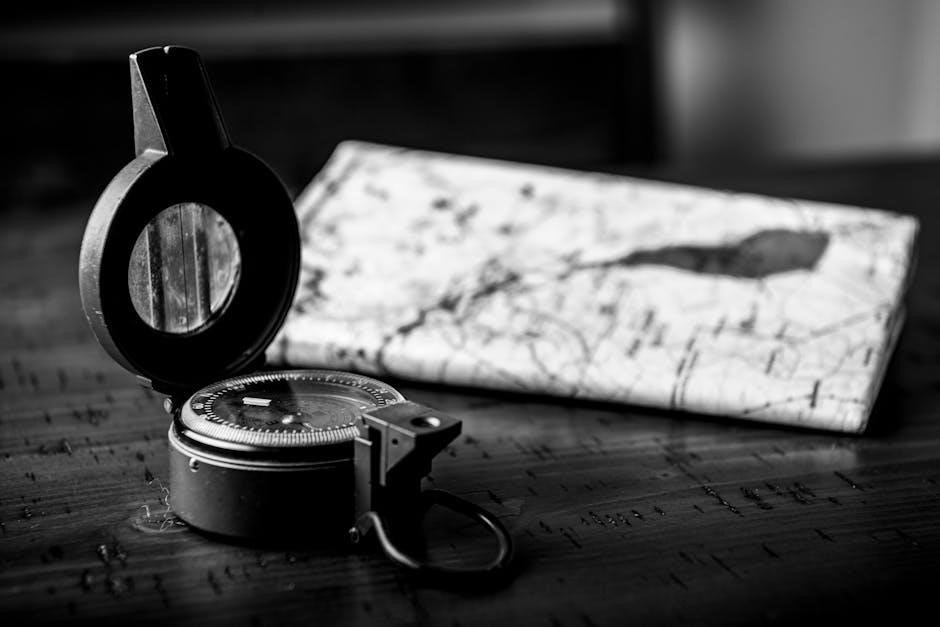
table runner size guide
Welcome to the Table Runner Size Guide! Choosing the right size and fit is essential for enhancing your dining experience. This guide helps you select the perfect dimensions, ensuring your table runner complements your table’s shape, size, and occasion, while adding aesthetic appeal to your setting.
Understanding Table Runner Basics
A table runner is a long, narrow piece of fabric designed to run down the center of a dining table, adding color, texture, and style to the setting. Unlike tablecloths, runners do not cover the entire table, leaving the table’s edges exposed. They are typically used to enhance the aesthetic appeal of a table while protecting it from spills and scratches. Table runners come in various materials, colors, and patterns, making them versatile for different occasions. The standard width of a runner ranges from 12 to 18 inches, while the length varies based on the table’s size and the desired overhang. They are easy to install and can be paired with placemats or a tablecloth for a polished look. Runners are also lightweight and easy to clean, making them a practical choice for everyday use or special events.

Measuring Your Table
To determine the right table runner size, start by measuring your table’s length and width accurately. This ensures the runner fits perfectly and enhances your table’s appearance.
How to Measure Different Table Shapes
Measuring different table shapes requires attention to their unique dimensions. For rectangular tables, measure the length and width. Square tables need only one side measured. Round tables require the diameter, while oval tables need both length and width. For irregular shapes, outline the table’s perimeter with a flexible measuring tape or string to determine the overall dimensions. Always consider the drop length (how far the runner hangs over the edges) when calculating sizes. This ensures the runner fits seamlessly, regardless of the table’s shape. By accurately measuring each dimension, you can choose a runner that complements the table’s design and your desired aesthetic. Proper measurement is key to achieving the perfect fit.

Determining the Overhang
The overhang of a table runner is the amount it extends beyond the table’s edges. It enhances aesthetics and protects the table. Standard overhangs range from 6 to 12 inches on each side, but this can vary based on the table’s height, the desired visual impact, and practical considerations like material and use. A longer overhang creates an elegant look, while a shorter one suits casual settings. Ensure the overhang doesn’t obstruct table legs or aprons and complements the overall decor. Adjustments may be needed based on specific table shapes and personal style preferences.
Standard Overhang Recommendations
Standard overhang recommendations vary based on table type and setting. For most tables, a 6-12 inch overhang on both sides is ideal, ensuring a balanced look. Formal events often use 12-15 inches for elegance, while casual settings may opt for 6-8 inches. Round or oval tables typically follow the same guidelines, but square tables might require slightly less overhang to avoid bulkiness. Lightweight fabrics like cotton or linen work well with longer overhangs, while heavier materials like velvet may require shorter lengths for stability. Always consider the table’s height and legroom to prevent the runner from dragging or obstructing movement. Adjustments can be made for unique table shapes or personal style preferences.
Choosing the Right Width
Table runner width depends on the table size and desired aesthetic. Standard widths range from 12 to 15 inches, but wider runners can add drama. Ensure the runner complements the table’s proportions without overwhelming it. Consider fabric type and drape for the best fit.
Calculating Runner Width
To determine the ideal width of your table runner, start by measuring the width of your table. For rectangular tables, measure the distance from one side to the other. For round or oval tables, measure the diameter. Add twice the desired overhang to this measurement to ensure the runner drapes evenly on both sides. For example, if your table is 40 inches wide and you prefer a 12-inch overhang, the runner width would be 40 inches + (12 inches * 2) = 64 inches. Consider the fabric type and occasion; thicker fabrics may require a slightly wider runner for proper drape, while formal events might call for a wider runner. Always account for fabric selvage and seams if making your own runner. Balance aesthetics and functionality to ensure the runner complements your table setting appropriately.

Considering Occasions and Settings
Runner size varies by occasion and setting. Formal events require longer, wider runners, while casual gatherings prefer shorter, narrower styles. Match the runner size to your table’s proportions and décor for a balanced look.
Runner Sizes for Different Events
Runner sizes vary depending on the event and setting. For formal dinners or weddings, opt for longer runners (90-120 inches) to create an elegant, flowing look. Holiday gatherings or themed parties may require shorter runners (60-80 inches) for a cozy, festive vibe. Casual brunches or everyday use can feature narrow runners (30-50 inches) for a minimalist aesthetic. Outdoor events or picnics might call for durable, weather-resistant runners in shorter lengths (40-60 inches). Always consider the table size, occasion, and desired visual impact when selecting the runner length and width. This ensures a harmonious balance between functionality and style.

Material Considerations
Material considerations play a crucial role in table runner size. Thicker fabrics may require slightly more fabric for the same visual effect, while lighter materials drape differently.
Impact of Fabric Type on Size
The fabric type significantly influences the size of a table runner. Heavier fabrics, such as velvet or linen, may require a slightly longer overhang due to their weight and drape. Lighter materials, like silk or cotton, tend to hang more gracefully, allowing for a standard overhang. Stretchy fabrics, such as spandex blends, can conform to table shapes more easily, offering flexibility in sizing. Additionally, the texture and pattern of the fabric can affect how it drapes, which may influence the desired length and width. For oval or rectangular tables, the fabric’s stretch and flow should be considered to ensure a seamless fit. Understanding these factors helps in selecting the ideal size for a polished look.
Measuring for Specific Table Types
Measuring specific table types involves determining their length, width, and shape. Oval, rectangular, round, and square tables require precise measurements to ensure a proper fit.
Guidelines for Oval and Rectangular Tables
For oval and rectangular tables, measure the longest diameter or length to determine the runner’s length. Add the desired overhang to both ends for a balanced look. Oval tables typically require runners slightly longer than their diameter, while rectangular tables need runners matching their length plus overhang. Standard widths for runners are 12-15 inches, but this can vary based on the table’s width. For oval tables, ensure the runner fits snugly without puckering, while rectangular tables benefit from runners that align with their straight edges. Fabric choice also plays a role, as stretchy materials may need less precise measurements. Always smooth the runner after placing it to ensure an even drape.

Understanding Drop and Overhang
Drop and overhang define how far a runner extends below and beyond the table edges. Balanced measurements ensure both aesthetics and functionality, typically ranging from 6 to 12 inches for a polished look.
Standard Drop Measurements
Standard drop measurements are essential for ensuring your table runner drapes evenly and elegantly. Typically, a drop of 6 to 12 inches is recommended for most tables, providing a balanced look without overwhelming the setting; For formal events, an extended drop of 12 to 18 inches creates a luxurious appearance, while casual gatherings may opt for a shorter drop of 4 to 6 inches for simplicity. The drop should be consistent on all sides to maintain symmetry. When calculating fabric needs, add twice the desired drop to the table length to account for both ends. This ensures the runner hangs evenly and complements the table decor seamlessly.
Using a Table Runner Size Chart
A table runner size chart simplifies selecting the perfect fit, ensuring balanced aesthetics and preventing measurement errors for various table dimensions and occasions.
Creating a Helpful Size Chart
To create a helpful table runner size chart, organize measurements by table length, width, and recommended runner sizes. Include options for different occasions, like formal dinners or casual gatherings. Add columns for standard overhangs, such as 6-12 inches on each side, to ensure a balanced look. Consider adding visual aids, like diagrams or images, to illustrate how runners drape elegantly over tables of various shapes and sizes. Tailor the chart to common table dimensions, such as rectangular, oval, or round tables, and include notes on fabric types that work best for each setting. This structured approach makes selecting the right runner effortless and ensures a polished appearance for any event.
- Include table length, width, and runner dimensions.
- Specify overhang ranges for versatility.
- Add visual guides for better understanding.
- Categorize by table shapes and occasions.

Calculating Fabric Needs
To calculate fabric needs, measure the table runner’s desired length and width, add overhang on both ends, and include seam allowances. This ensures accurate fabric requirements.
- Measure runner length and width.
- Add overhang for both ends.
- Incorporate seam allowances for stitching.
Fabric Requirements for Homemade Runners
For homemade table runners, fabric requirements depend on the runner’s dimensions and fabric width. Standard fabric widths are 45″ or 54″. If your runner is wider than the fabric, you’ll need to piece it. Add 1/4″ for seams on all sides. Calculate total fabric length by adding table length, overhang, and seams. For example, a 72″ table with 12″ overhang needs 96″ fabric. Convert inches to yards: 96″ ÷ 36″ = 2.67 yards, so buy 3 yards. Consider fabric type: delicate fabrics may need more, while sturdy fabrics need less. Check for pattern repeats to ensure alignment. Buy a little extra for safety, especially if matching patterns or using sales.

Matching Runner Size to Room Decor
Matching runner size to room decor ensures harmony and balance. Choose sizes that complement table proportions, room style, and aesthetic elements for a cohesive look.
Proportional Considerations
Proportional considerations are key to ensuring your table runner enhances the room’s aesthetic. Measure the table’s length and width to determine the runner’s appropriate size. A runner that is too narrow may look out of place, while one that is overly wide can overwhelm the space. Consider the room’s style—modern, traditional, or rustic—to align the runner’s proportions with the decor. For example, a sleek, narrow runner suits contemporary settings, while a wider, flowing design complements rustic or formal spaces. Always balance the runner’s size with the table’s dimensions and the surrounding decor to create visual harmony and a polished look.

Visual Aids for Aesthetic Decisions
Use visual aids like templates or apps to preview runner styles on your table. Fabric swatches and inspirational photos help in making informed decisions.
Using Examples for Better Understanding
Visual examples are essential for understanding how different runner sizes complement table settings. For instance, a rectangular table measuring 72×40 inches pairs well with a runner of 72×15 inches, creating balanced proportions. Oval tables, like a 72-inch diameter oval, benefit from a runner of 72×15 inches, mirroring the table’s length. Round tables with a 60-inch diameter look elegant with a 60×15-inch runner, ensuring uniform coverage. These examples help visualize how runners enhance table aesthetics without overwhelming the space. By referencing these scenarios, you can better align your runner size with your table’s dimensions and decor, achieving a polished look for any occasion.

Organizing Your Guide
A well-organized table runner size guide ensures easy navigation. Start with basic measurements, then categorize by table shapes, occasions, and fabric types. Include visual aids like charts and diagrams to simplify decision-making. Use clear headings and subheadings to break down information logically. This structured approach helps users find the perfect runner size quickly, enhancing their overall experience and ensuring a polished table setup for any event or home decor style.
Step-by-Step Approach
A step-by-step approach to creating a table runner size guide ensures clarity and ease of use. Begin by measuring the table length, width, and shape to determine the runner’s dimensions. Next, calculate the desired overhang, typically 6-12 inches on each side for a balanced look. Choose the fabric type and estimate the fabric requirements based on the runner’s size and overhang. Consider the occasion and setting to select appropriate widths and styles. Finally, organize the information into charts or diagrams for quick reference. This methodical process helps users confidently select the perfect runner size for their table, ensuring a seamless and stylish setup for any event or dining occasion.
Leave a Reply
You must be logged in to post a comment.